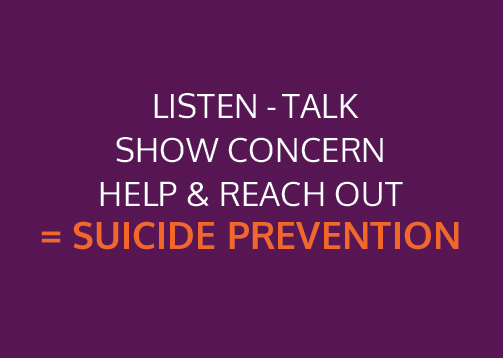September 10, 2018
Suicide and Des-pair

I’ve learned a lot about suicide over the last several years because my spouse works with college-aged students, and regularly counsels students who are considering suicide. She often reminds me that suicide is the 2nd leading cause of death in 18-34 year olds, and that US Veterans are twice as likely as civilians to die by suicide, according to the Department of Veterans Affairs. In fact, on average, one person dies by suicide every 8 hours in Washington.
My spouse’s work with the local organization, Forefront at the University of Washington, has taught her and me many important things about suicide. Among the most important, is to change the way we talk about it. Using the language “died by suicide” or “died due to suicide”, removes the insensitive, judgmental, stigmatizing nature of the language “committed suicide”, which implies almost criminal intent. Language matters. Equally critical is to talk more openly about suicide, because bringing it out of the shadows can save lives.
Nothing made suicide more visible to us all than the recent and deeply sad news that both Kate Spade and Anthony Bourdian had died by suicide. Because they were by all accounts famous, wealthy and successful, the confusion about their deaths was amplified. How could they, of all people, choose to end their lives? We ask or assume the obvious: Financial difficulty? Depression? Intolerable pressures and stress? Legal problems? Marital issues?
An article by Dr. Mark Goulston, titled “Why people kill themselves: It’s not depression”— is an eight part series that explores why he believes none of these things we actually think causes a person to take their own life, but are instead contributors to it. As a psychiatrist specializing in suicide, Goulston describes what he believes all people who die by suicide feel when they prepare to end their lives, and that is ‘des-pair’. Not despair, but des-pair – ‘the feeling of being unpaired with and without the reason to live’. Goulston identifies 8 unpairings starting with Hopelessness (unpaired with a future that is worth living), Helplessness (unpaired with the ability to pull yourself out of it), Uselessness (unpaired with any treatment or solution, or the feeling that you can’t contribute), along with 5 others.
This notion of being un-paired or disconnected resonates with me, in thinking about our work at WithinReach. Though the families who reach out to us for help may not be considering suicide, I believe many of them are feeling an element of des-pair– or feeling unpaired or disconnected from the hope, help, and the power they need to move forward on their path to health and safety. I think the heart of our work is about connecting or pairing people with the resources they need to be healthy and safe, which means paring them with hope and personal agency.
A longstanding struggle in our work has been how to connect people with coordinated behavioral (mental) health and physical health services. Most often these systems of care operate separately, making it harder to identify behavioral health care needs and provide whole-person care. We continue to update our database, Resource Finder, with community mental health resources that provide counseling and behavioral health services that accept Apple Health (Medicaid) payment or provide reduced rate or sliding fee scales. And, we are encouraged by the Health Care Authority’s efforts to make sure that behavioral health services are fully integrated into the physical health services offered through Apple Health to families in our state.
This will help more families receive preventive or early mitigation care — and move from des-pair to hope.




